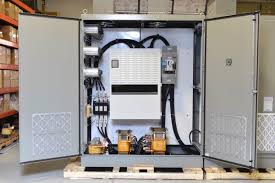Posted on 7th Mar 2024

Darwin Motion Variable Frequency Drives (VFDs) play a crucial role in controlling the speed of electric motors in various industrial and commercial applications. They offer energy efficiency, precise control, and reduced wear and tear on machinery. However, when it comes to purchasing a VFD, understanding the pricing can be a complex task. Several factors influence VFD prices, and variations can occur based on different considerations. In this article, we delve into the intricacies of VFD pricing, exploring the factors that contribute to it and providing insights for potential buyers.
Power Rating: One of the primary determinants of VFD prices is the power rating or the horsepower (HP) of the motor it will control. Generally, higher HP ratings command higher prices due to the increased capacity and complexity required in the VFD design.
Brand and Manufacturer: Like most products, the brand and manufacturer of a VFD significantly impact its price. Well-established brands with a reputation for reliability and quality often come with a premium price tag. However, cheaper alternatives from lesser-known manufacturers may sacrifice certain features or quality standards.
Features and Functionality: VFDs come with a range of features and functionalities, such as built-in communication protocols, advanced control algorithms, overload protection, and diagnostic capabilities. The more features a VFD offers, the higher its price is likely to be. Buyers should assess their specific requirements to determine which features are essential and which ones they can do without to find a suitable balance between cost and functionality.
Enclosure Type: VFDs are available in various enclosure types, including open chassis, NEMA 1 (enclosed), NEMA 12 (dust-tight), NEMA 4 (watertight), and NEMA 4X (corrosion-resistant). The choice of enclosure type depends on the environmental conditions of the installation site. Enclosures with higher degrees of protection typically incur higher costs due to additional materials and manufacturing processes involved.
Voltage and Compatibility: VFD prices can also vary depending on the voltage and compatibility requirements of the application. VFDs designed for specific voltage ranges or compatible with certain motor types may be priced differently from those with broader compatibility.
Market Conditions: Like any commodity, VFD prices can fluctuate based on market conditions, including supply and demand dynamics, currency exchange rates, and raw material costs. Buyers should be mindful of market trends and potential price fluctuations when planning their purchases.
Sales Channels: The channel through which VFDs are purchased can influence their prices. Direct purchases from manufacturers may offer competitive pricing, especially for bulk orders, while purchasing through distributors or retailers may incur additional markup costs.
Geographic Location: VFD prices can vary depending on the geographic location and prevailing economic conditions. Factors such as taxes, import/export duties, and shipping costs can all contribute to regional price disparities.
Total Cost of Ownership: When evaluating vfd drive price, buyers should consider the total cost of ownership, which includes not only the initial purchase price but also installation, maintenance, and energy consumption costs over the lifespan of the VFD. Opting for a higher-quality, energy-efficient VFD may result in long-term cost savings despite a higher initial investment.
Application Requirements: It's essential to assess the specific requirements of the application, including the desired level of control, environmental conditions, and compatibility with existing equipment. Investing in a VFD that meets these requirements ensures optimal performance and longevity.
Return on Investment (ROI): Buyers should calculate the potential ROI associated with investing in a VFD, taking into account factors such as energy savings, productivity gains, and reduced maintenance costs. While higher-priced VFDs may offer additional benefits, the ROI analysis can help justify the investment decision.
VFD price can vary significantly based on various factors such as power rating, brand, features, and market conditions. Buyers should carefully evaluate their requirements, consider the total cost of ownership, and assess the potential return on investment to make informed purchasing decisions. By understanding the factors influencing VFD prices and considering relevant variations and considerations, buyers can find the most suitable VFD solution for their applications while balancing cost and performance effectively.